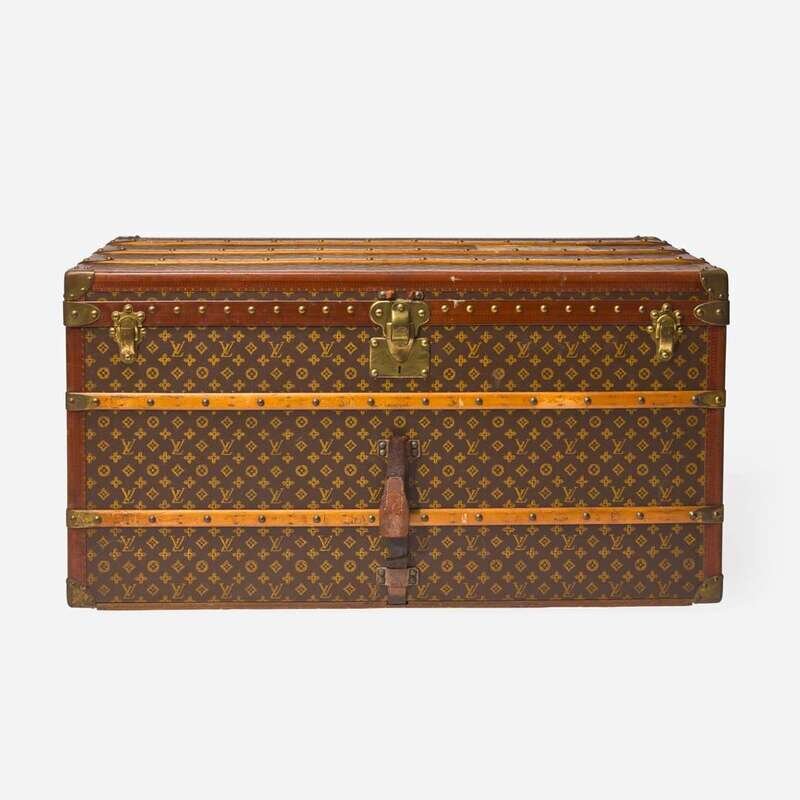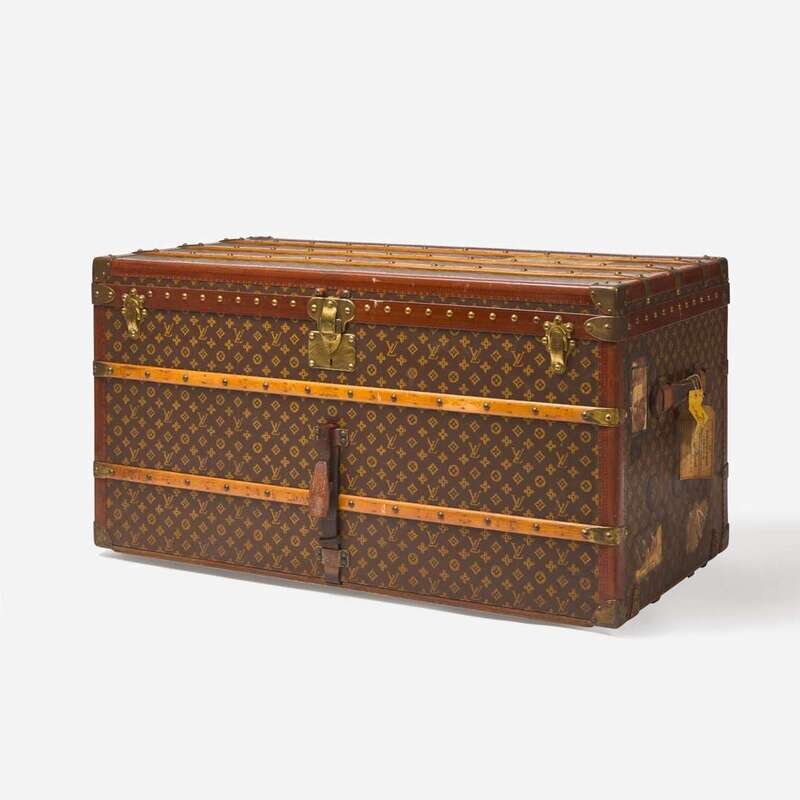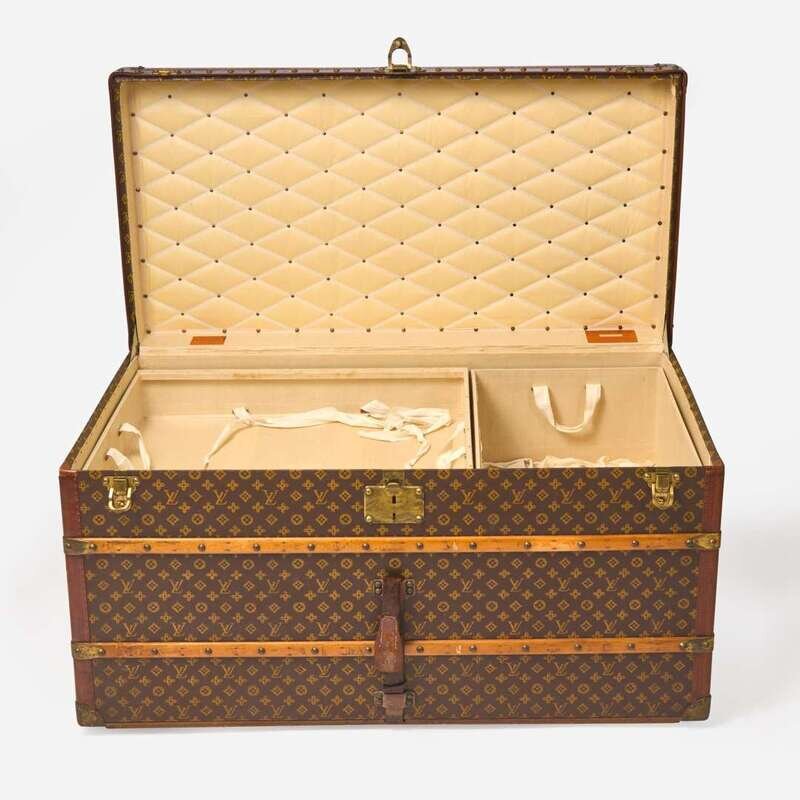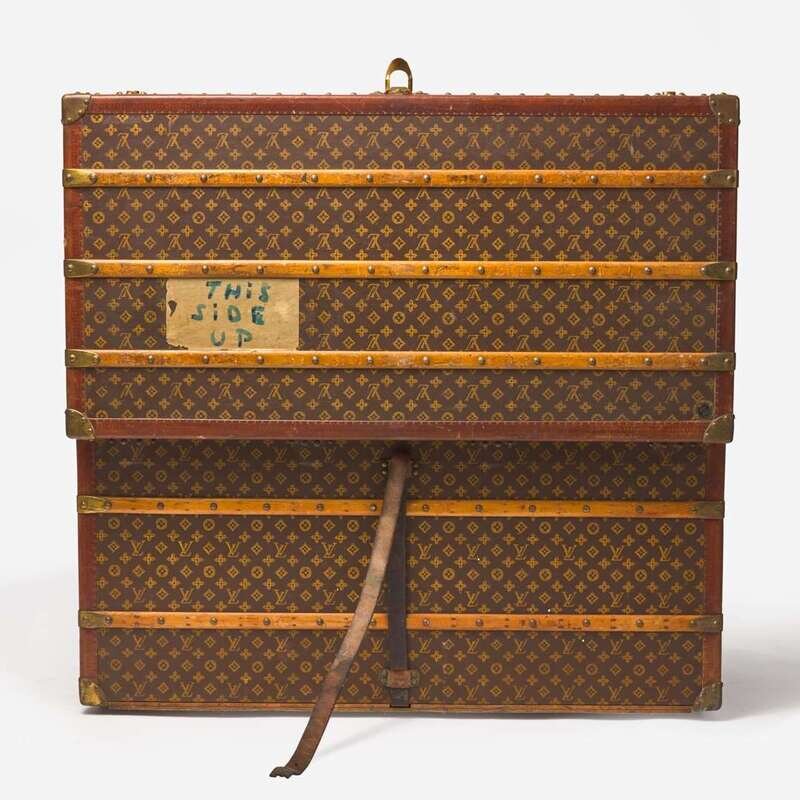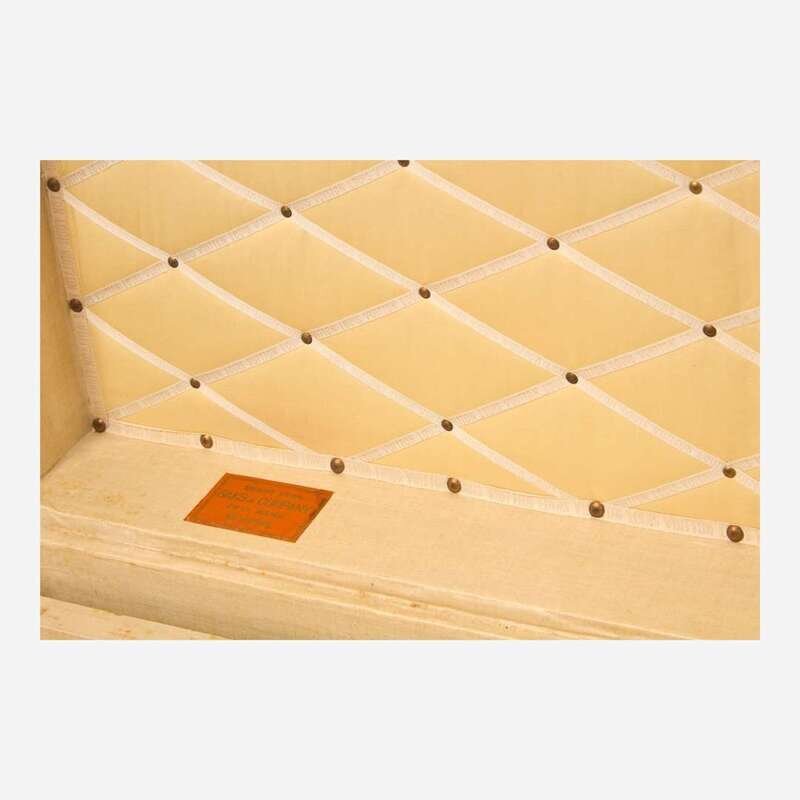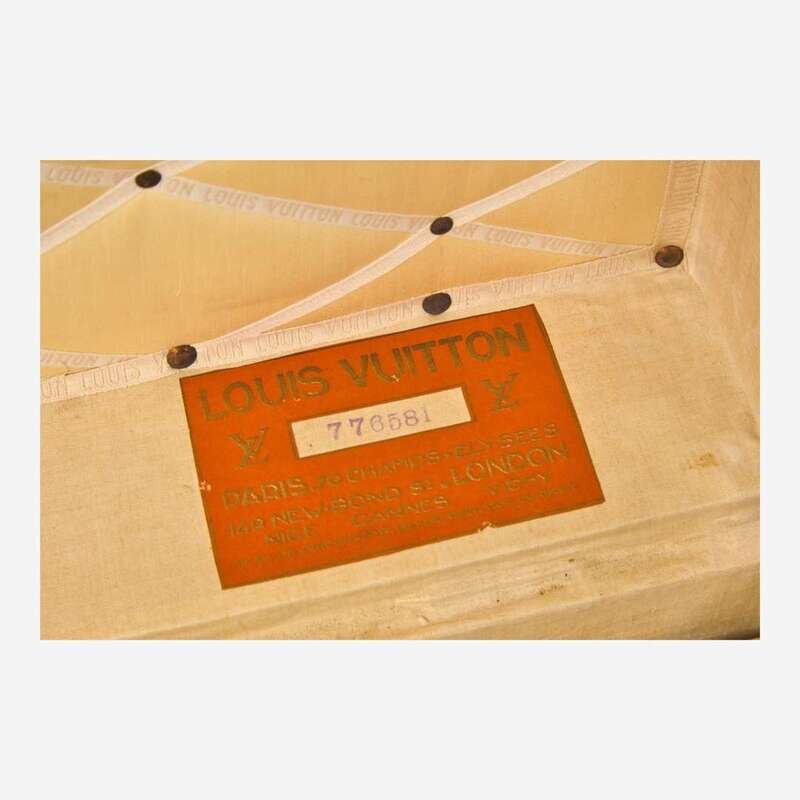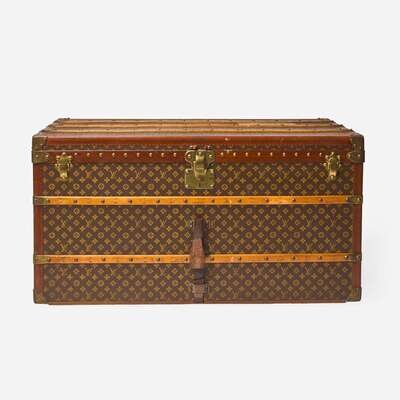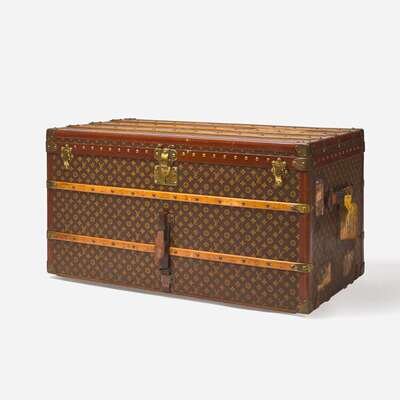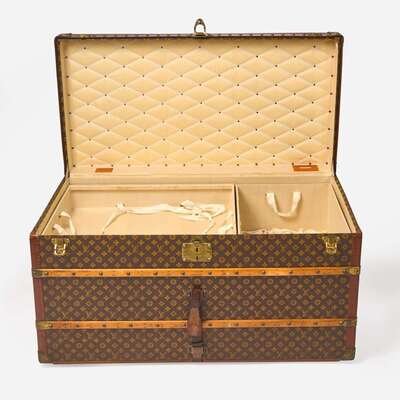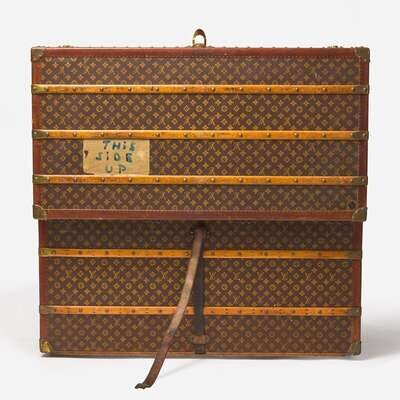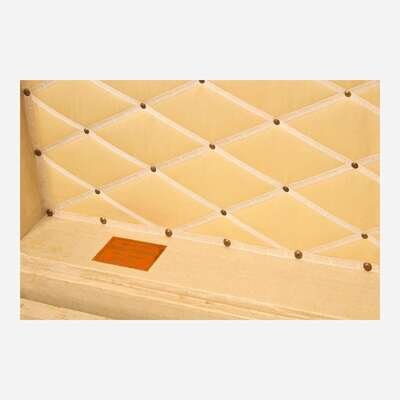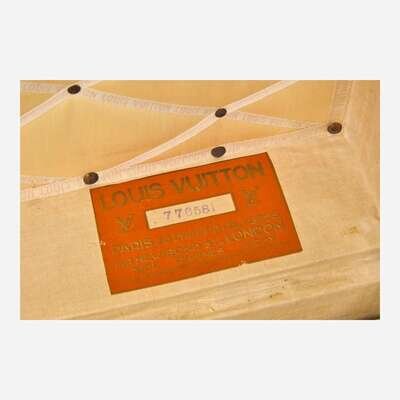Condition Report
Contact Information
Lot 142
Lot Description
Wood with monogram canvas covering, embossed monogram leather trim, wood rails, and engraved brass hardware, raised on four metal casters. Interior fitted with two large removable organizers at the base, surmounted by a group of three organizers (one deep compartment to the right and two shallow compartments to the left), further surmounted by one large removable organizer, all with cloth ties.
Bearing original labels for Louis Vuitton and Saks & Company, New York, and stamped 776581; lock marked "70 Champs Élysées / Paris / Louis Vuitton / London / 149 New Bond Street," also marked "Made in France" below; lock escutcheon stamped "063609." Black painted monogram "C.O.M." on both sides of exterior, with assorted early twentieth-century storage labels on the left side and a large directional label handwritten and applied to trunk lid. Bearing brass Saks and Company retailers' plaque nailed to the rear left corner of the trunk lid.
H: 23 3/8, W: 44, D: 23 in. (inclusive of rails and rivets, exclusive of handles and straps)